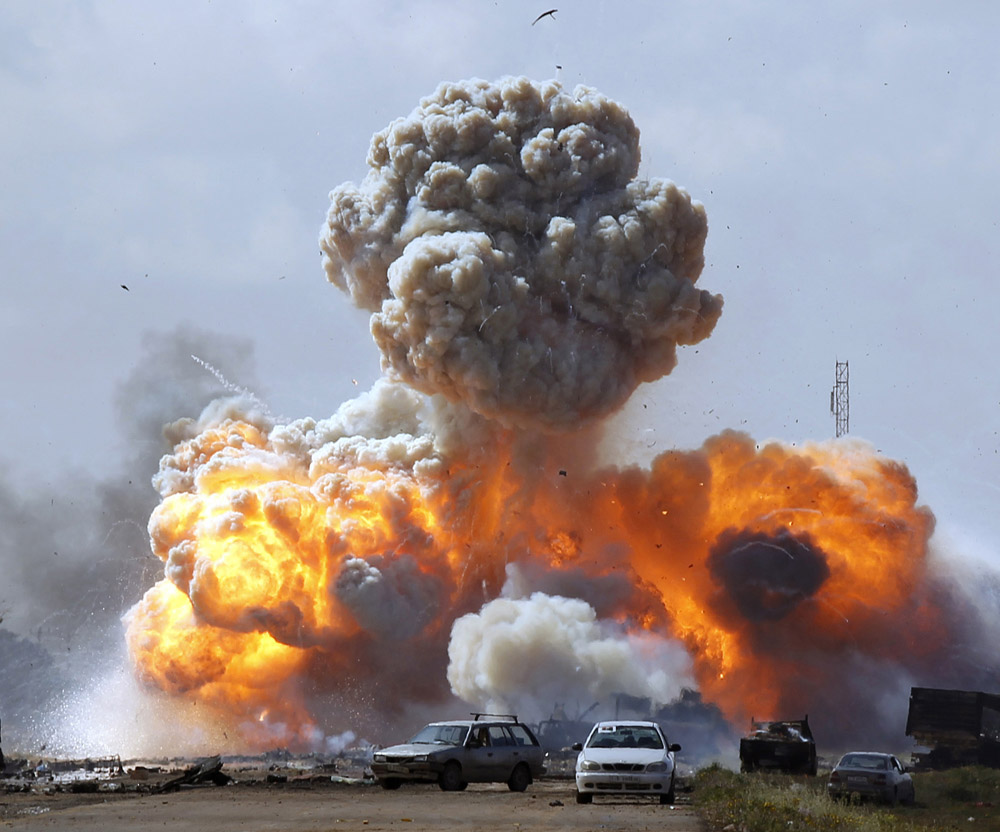
NATO and the Responsibility to Protect: Whom Exactly?
Publication: Eurasia Daily Monitor Volume: 8 Issue: 96
By:

Following in US footsteps, NATO has stumbled into its own war of choice in Libya. The rationale in this case is an assumed “responsibility to protect” populations, apparently anywhere, from mass-scale atrocities or war crimes, be they perpetrated by governments or resulting from civil conflicts. NATO’s intervention in Libya is the first-ever case of assuming and enforcing such a responsibility through military force under a UN mandate.
The idea that the “international community” bears that kind of protective responsibility was introduced by the 2005 “World Summit” at the United Nations. Civil wars and massacres in Rwanda, Sudan, and elsewhere have spurred this initiative. Adopted by General Assembly and Security Council resolutions in 2005 and 2006, respectively, the concept was further developed by UN Secretary-General Ban Ki-moon’s 2009 report on implementing such a responsibility, and endorsed by a General Assembly resolution that same year. Implementation envisages military intervention from outside as a last resort, subject to UN Security Council approval.
These documents do not claim to establish international law; they are, instead, “normative” (optional). Nor do they postulate an obligation to protect populations from the types of violence they describe. The “responsibility to protect” is ambiguous enough to allow wide scope for interpretation on a case-by-case basis. Thus, its enforcement through force would imply a war of choice.
Responding to Libya’s civil conflict, the Obama administration pushed through the UN Security Council’s Resolution 1973 on March 17: the first ever to authorize implementing the responsibility-to-protect through military force. The goal sounds ambitious, but the means authorized are limited to a no-fly zone over Libya and monitoring of its maritime border. Inevitably, therefore, the Western belligerents have greatly overstepped the UN mandate’s terms. The United States launched the Libya operation, Odyssey Dawn, on March 19; but folded it into NATO’s operation, Unified Protector, on April 3, minimizing US participation in combat actions. This has raised the twin prospects of a prolonged war and humanitarian mission creep for NATO in Libya.
NATO’s Secretary-General, Anders Fogh Rasmussen, has embraced the UN doctrine of responsibility-to-protect on the Alliance’s collective behalf. In several statements he has invoked the “noble cause” of protecting civilians from government-perpetrated violence, hailed the Security Council’s resolutions mandating the intervention as “historic” and legitimized the Libya operation with exclusive reference to humanitarian considerations and the UN’s authority (www.nato.int, March 31, April 14).
Such rhetoric might make it difficult for NATO to justify future operations not approved by the UN and not necessarily humanitarian. It can also nudge the Alliance into more humanitarian interventions, diverting funds from shrinking defense budgets, ignoring challenges in NATO’s eastern neighborhood, and detracting from NATO’s preparedness for its core missions.
Humanitarian intervention is a major case of mission creep for NATO. It makes short shrift of the Alliance’s Strategic Concept, only months after its adoption at NATO’s summit in November 2010. This top guidance document does not envisage protecting populations of the world (as humanitarian interventions would) from their governments or from each other. NATO’s new Strategic Concept contains four references to defending or protecting populations. These are the Alliance’s own:
“The greatest responsibility of the Alliance is to protect and defend our territory and our populations against attack” (article 16). NATO shall “defend our populations and territories against ballistic missile attack” (article19). “Crises and conflicts beyond NATO’s borders can pose a direct threat to the security of the Alliance’s territory and populations. NATO will therefore engage, when possible and when necessary, to prevent crises, manage crises, stabilize post-conflict situations, and support reconstruction” (article 20). NATO shall adequately resource “missions that are essential to the security of Alliance populations and territory” (article 35) (www.nato.int/strategic-concept, November 2010).
The Strategic Concept’s article 20 can, however, accommodate an intervention in Libya (as indeed elsewhere in NATO’s neighborhood) to deal with threats arising from conflicts there and affecting Allied countries’ security (see above). Moreover, article 19 tasks NATO to prepare for “protection of critical energy infrastructure and transit areas and lines.”
Libya’s civil war and NATO’s bombing campaign are, in combination, generating significant threats to Europe’s internal and economic security: a flood of North African and Sub-Saharan refugees, many of them with uncheckable identities, and an indefinite halt on Libyan oil and gas supplies to Europe. The US and NATO failed to anticipate these and other consequences of their intervention in Libya, and have yet to comment on these issues.
Eight weeks of air bombing—involving U.S. planes in the first two weeks only—have not produced a military solution, let alone a political one. NATO has been forced into an air war of attrition against Colonel Muammar Gaddafi’s third-rate force. The Alliance’s self-imposed terms of reference (military intervention for humanitarian purposes) prolong this war and increase its costs. To escape this dilemma, some urge intensifying the air strikes. The UK’s Chief of the Defense Staff, General Sir David Richards, now calls for expanding the bombing target list, so as to include the country’s civilian infrastructure, which the Western belligerents (according to Richards) have refrained from targeting thus far (Financial Times, Daily Telegraph, May 16).
Thus, the “responsibility to protect” becomes a distraction even on a mission undertaken in that responsibility’s name. NATO, however, has no responsibility to protect populations or countries other than the Alliance’s own and those of neighboring aspirant countries. No known document of the Alliance authorizes humanitarian intervention as an end in itself, divorced from strategic interests.




